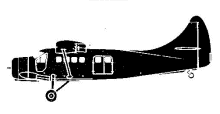Incident Overview

Description
The Otter broke up in flight while being test flown at 4,000 feet in conditions of severe turbulence. The Court of Inquiry found that structural failure had occurred due to fatigue, as the aircraft had been operated for most of its life under gusty and turbulent conditions. According to dhc-3archive.com, a DHC technical representative inspected the wreckage. It appeared a wing had broken off, striking the tail. The tail plane then separated. He concluded that “catastrophic damage was incurred due to elevator tab flutter mechanism. Failure of the elevator caused loss of control, which permitted the aircraft to roll or ‘bunt’ over on its back, causing the wing to break in negative bending with subsequent destruction of the entire empennage and rear fuselage section”.
Source of Information
https://www.dhc-3archive.com/DHC-3_220.htmlhttps://www.dhc-3archive.com/DHC-3_220.htmlPrimary Cause
Fatigue due to prolonged operation under turbulent conditions.Fatigue due to prolonged operation under turbulent conditions.Share on:





